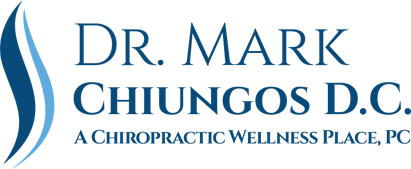Chronic back pain is a persistent, long-term condition that can last for 12 weeks or more, even after the initial injury or underlying cause has been treated. It’s a prevalent issue that affects millions of people worldwide, impacting their quality of life and often leading to a cycle of pain that seems never-ending.
Traditional Methods of Treating Chronic Back Pain
When it comes to treating chronic back pain, traditional methods often include a combination of medication, physical therapy, and in more severe cases, surgical intervention. While these treatments can offer temporary relief, they often come with their own set of drawbacks. Medications can lead to dependency and have side effects, physical therapy requires a long-term commitment, and surgery comes with risks and a lengthy recovery period.
Introduction to Spinal Decompression
Enter spinal decompression, a non-surgical alternative that has been gaining traction (pun intended!) in the healthcare community for its effectiveness in treating chronic back pain. This therapy aims to relieve pain and promote optimal healing in the back by gently stretching the spine, changing its force and position to take the pressure off spinal discs.
Understanding Spinal Decompression Therapy
Spinal decompression is a type of motorized traction that helps back pain. The therapy works by gently stretching the spine, which changes the force and position of the spine. This change takes pressure off the spinal discs—gel-like cushions between the bones in your spine—by creating negative pressure in the disc. As a result, bulging or herniated discs may retract, taking pressure off nerves and other structures in your spine.
Historical Background
The concept of spinal decompression has roots that go back several decades, but it’s the advancement in technology that has made it a viable option for treating chronic back pain today. Initially, the idea of stretching the spine to alleviate pain was mostly theoretical and lacked the sophisticated equipment we have now. Over the years, research and technological advancements have refined the process, making it a safe and effective treatment option.
The Science Behind Spinal Decompression
The science of spinal decompression is rooted in the principles of biomechanics and physics. When the spine is stretched, intradiscal pressure is reduced, creating a vacuum-like effect. This vacuum helps to pull the herniated or bulging disc material back into the disc, promoting the diffusion of water, oxygen, and nutrient-rich fluids. These elements are essential for the disc to heal and maintain its health, thereby alleviating pain and discomfort.
The Benefits of Spinal Decompression
- Pain Relief: One of the most compelling benefits of spinal decompression is its ability to provide significant pain relief. By creating a negative pressure inside the affected discs, the therapy helps retract the bulging or herniated material, thereby relieving pressure on the nerves. This can result in immediate relief from pain and discomfort, making it an attractive option for those who have been suffering from chronic back pain for extended periods.
- Non-Invasive Nature: In a world where surgical procedures are often seen as the last resort for chronic back pain, the non-invasive nature of spinal decompression stands out. There are no incisions, no anesthesia, and no hospital stays. This makes it a low-risk option, especially for those who may be apprehensive about going under the knife or those who may not be ideal candidates for surgery due to other health conditions.
- Cost-Effectiveness: While the cost of spinal decompression can vary depending on various factors like location and the number of sessions required, it often proves to be a cost-effective alternative to surgical treatments. Surgeries not only come with a hefty price tag but also additional costs like hospital stays, anesthesia, and post-operative care. Spinal decompression eliminates many of these additional costs, making it a financially viable option for many.
What To Expect During Spinal Decompression Therapy
- Initial Consultation: Your journey to pain relief starts with an initial consultation. During this meeting, your healthcare provider will review your medical history, perform a physical examination, and may even recommend imaging tests like X-rays or MRIs. This comprehensive assessment helps in determining whether spinal decompression is the right treatment option for you.
- During the Therapy: Once you’re deemed a suitable candidate, you’ll proceed to the therapy sessions. You’ll be comfortably positioned on a spinal decompression table, and a harness will be fitted around your pelvis and trunk. The table is operated by a computer, which is programmed to apply precise amounts of spinal decompression, targeting the specific discs that need treatment. The experience is generally pain-free, and many patients even find it relaxing.
- Post-Therapy Care: After the session, you may be given additional treatments like heat or cold therapy, electrical stimulation, or ultrasound to enhance the effects of spinal decompression. Your healthcare provider will also discuss a tailored post-therapy care plan, which may include exercises to improve your strength and flexibility, as well as lifestyle advice to prevent future back issues. Follow-up appointments will be scheduled to monitor your progress and make any necessary adjustments to your treatment plan.
Spinal Decompression In Chelmsford, MA For Back Pain
In this comprehensive guide, we’ve explored spinal decompression as a non-surgical solution to chronic back pain. From understanding the science behind the therapy to discussing its numerous benefits and what to expect during treatment, it’s clear that spinal decompression offers a promising alternative to traditional methods like medication and surgery.
If you’ve been grappling with chronic back pain and are looking for a treatment option that is both effective and minimally invasive, spinal decompression could be the answer you’ve been searching for. With its proven track record in providing significant pain relief, its non-invasive nature, and its cost-effectiveness, spinal decompression stands as a compelling choice for those seeking a better quality of life.
Your Path to Pain-Free Living Starts Here: A Personal Invitation from Dr. Mark Chiungos
You’ve read the facts, understood the science, and weighed the benefits. Now, it’s time to take action. If you’re tired of living with chronic back pain and are ready for a transformative, non-surgical solution, Dr. Mark Chiungos at A Chiropractic Wellness Place in Chelmsford, MA, is here to guide you every step of the way.
👉 Why Choose Dr. Mark Chiungos?
With years of experience and a deep commitment to patient well-being, Dr. Mark Chiungos is not just a healthcare provider; he’s your partner in this journey towards a pain-free life. At A Chiropractic Wellness Place, you’re not just another patient; you’re a valued individual deserving of personalized care.
👉 What’s Next?
- Book a Consultation: Take the first step by scheduling a one-on-one consultation with Dr. Mark Chiungos. This is your opportunity to discuss your specific condition, ask questions, and determine if spinal decompression is the right treatment for you.
- Personalized Treatment Plan: After a thorough assessment, you’ll receive a tailored treatment plan designed to address your unique needs and health goals.
- Ongoing Support: From your first session to post-therapy care, you’ll receive ongoing support and guidance, ensuring you get the most out of your treatment.
👉 Ready to Transform Your Life?
Don’t let chronic back pain dictate your life any longer. Reach out today and take the first step towards a brighter, pain-free future.
📞 Contact Us Now at (978) 376-8190 or Click Here to Schedule Your Consultation.
FAQ
Chiropractic
Most insurance policies offer some chiropractic coverage. Dr. Chiungos works with Blue Cross-Blue Shield, Harvard Pilgrim Healthcare, Tufts Health Plan, Unicare/GIC, and Medicare. See the No Surprises Act for more information.
Absolutely. Chiropractic as a profession is more than 100 years old. We follow industry guidelines during our new patient induction process to minimize risk and maximize benefit. Chiropractic malpractice insurance is considered by many to be the least costly professional insurance in the healthcare industry because chiropractic is generally considered a safe, manual therapy.
It depends on your mechanism of injury and your current state of health. You might start feeling better as soon as your adjustment is finished. You might need to go home and ice (Dr. Chiungos will advise you). If your injury is serious, it may take several visits. But your healing has begun from the first adjustment. Your personal care plan is designed to take you from where you are today to your best possible outcome. Dr. Chiungos will keep you updated on your progress at each visit.
SpineMED®
Decompression treatment is not currently covered by health insurance. If Dr. Chiungos believes this is an integral part of your treatment plan, he will discuss all costs and potential discounts before the start of care. You will receive informed consent.
Spinal Disc Decompression with the SpineMED® Table has shown to be safe and generally without major side effects or complications once abnormal conditions have been ruled out. The process is so safe and comfortable, it’s not uncommon for patients to fall asleep!
- Patients under 12 years old
- If you had spinal surgery that involved clips, mesh or fusion
- If you have fractures, tumors or infections
- If you have osteoporosis or spondylolisthesis where there’s been a fracture or non-union defect in the spine, where that segment that we want to traction is unstable
Damaged intervertebral discs seldom heal as the discs are constantly under pressure from muscular spasm—during normal activities, and even while sleeping! SpineMED is designed to reduce the pressure in the discs, promoting the influx of vital fluids, nutrients and oxygen back into the discs to assist the body’s natural rebuilding process. This process may speed up the natural repair and could eventually heal damaged spinal discs.
Sessions are typically 30 minutes long. It could take 15 to 25 sessions or more to see some relief from your discomfort. That’s variable based on your status and the condition we’re treating. Ideally, the sessions are performed daily with rest on the weekend.
Aspen Laser
Laser treatment, as used in chiropractic offices, is not currently covered by health insurance. If Dr. Chiungos believes this is an integral part of your treatment plan, he will discuss all costs and potential discounts before the start of care.
Laser therapy has been in use for over thirty years with almost no side effects reported. Aspen Laser is FDA-registered and passes all safety compliance requirements. The treatments are not painful; in fact, laser is warm and comfortable to your skin. Dr. Chiungos will check in with you regularly to make sure the temperature feels right, and you can always speak up if it starts to feel too warm. The main safety concern is for the eyes, which is why Dr. Chiungos will provide protective glasses for both patient and doctor at each session.
Laser is effective on most parts of the body; however, there are times when laser is not appropriate:
- during pregnancy
- within twelve months of cancer treatments
- during the use of photo-sensitizing medications
- over recent steroid injections (seven days)
- over growth plates or reproductive glands
- over tattoos or skin infections
Laser therapy promotes energy production supporting cellular repair, increased blood flow, increased red blood cell oxygen-carrying capacity, and decrease of inflammation. When used in conjunction with traditional chiropractic, laser can reduce pain and healing time, and promote a deeper, more complete healing to the area of concern.
Sessions typically last 15 to 20 minutes, depending on the size of the treatment area. They generally start longer and reduce in length as you heal. Most acute conditions require only 10 – 12 treatment sessions. If you have a chronic condition, you may need 12 – 20 treatments and one or two follow-up sessions every month. The amount and frequency of treatments are determined through assessment of your condition combined with Dr. Chiungos’s experience treating patients with laser. You will likely start to feel better after your first 5 sessions.










